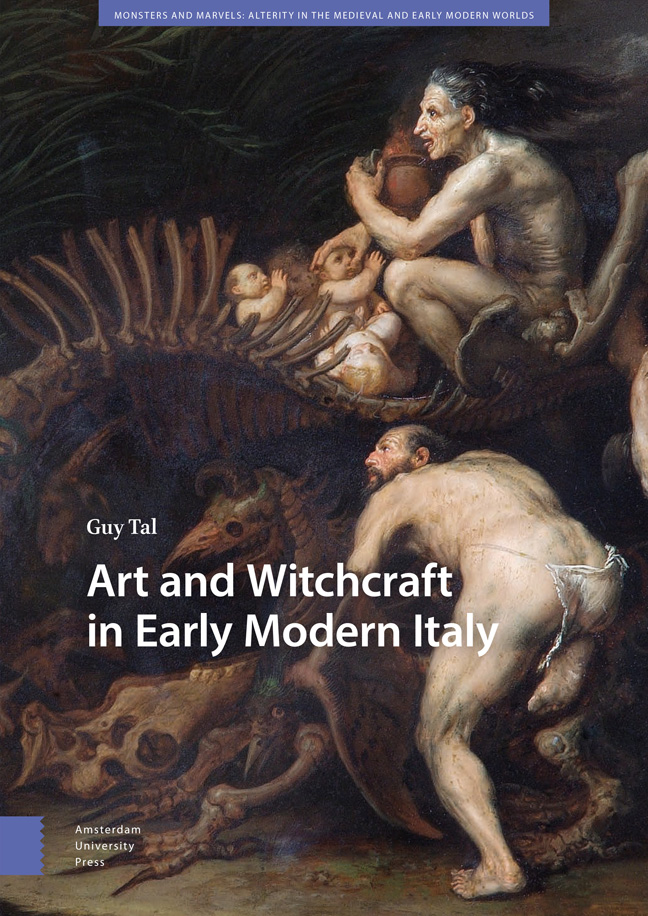Book contents
- Frontmatter
- Contents
- List of Illustrations
- Acknowledgments
- Introduction
- 1 Old Women under Investigation: The Drab Housewife and the Grotesque Hag
- 2 Chimerical Procession: The Poetics of Inversion and Monstrosity
- 3 Priapic Ride: Gigantic Genitals, Penile Theft, and Other Phallic Fantasies
- 4 Magical Metamorphoses: Variations on the Myths of Circe and Medea
- 5 A Visit from the Devil: Horror and Liminality in Caravaggesque Paintings
- Epilogue
- Bibliography
- Index
1 - Old Women under Investigation: The Drab Housewife and the Grotesque Hag
Published online by Cambridge University Press: 22 February 2024
- Frontmatter
- Contents
- List of Illustrations
- Acknowledgments
- Introduction
- 1 Old Women under Investigation: The Drab Housewife and the Grotesque Hag
- 2 Chimerical Procession: The Poetics of Inversion and Monstrosity
- 3 Priapic Ride: Gigantic Genitals, Penile Theft, and Other Phallic Fantasies
- 4 Magical Metamorphoses: Variations on the Myths of Circe and Medea
- 5 A Visit from the Devil: Horror and Liminality in Caravaggesque Paintings
- Epilogue
- Bibliography
- Index
Summary
Abstract: Is old age in a woman a sufficient characteristic by which one might know her for a witch? In the two works on paper examined in this chapter, the old witch's identity and intentions remain intractable and inconclusive. In Enea Vico's engraving after Parmigianino, the drab housewife dutifully plying her distaff appears devoid of any sorcerous traits, but a subtle aspect of the visual semantics at play in the image raises the suspicion that she might, after all, be a witch. In Leonello Spada's sketch, the grotesque hag pouncing upon a terror-stricken young gallant from behind embodies the witch in both appearance and act, but the letter containing the sketch suggests that she is best identified as an apparitional hag.
Keywords: inverted world, distaff, left-handedness, incubus, nightmare, illmatched couple
The Bolognese painter Guido Reni (1575–1642) harbored a mortal fear of witches, believing them to have the power to render him unfit for his work by blighting his hands, that he never allowed entry into his house to any person of the female sex. The biographer Carlo Cesare Malvasia relates that the banishment extended to old women in particular, about whom Guido complained that “every time he spent money or stopped to do some business he always found one [an old woman] near him.” Indeed, at the height of the persecution of witches in Italy, it was not uncommon for old women (vetulae) to be accused of witchcraft. Yet, except for their mature age, the accused bore no distinctive marks to set them apart as witches. In searching for would-be witches, inquisitors were compelled to resort to a range of physical “tests” performed upon the body of a suspected witch. If a stigma diabolicum was indelibly stamped upon her body, if the prick of a needle did not cause an appropriate irritation on the skin, if she did not sufficiently cry out under torture, or if hidden charms were found on her naked body, then the “evidence” rendered it conclusive that the woman was in fact a witch. But if these canonical methods failed to produce conclusive evidence, the identification of the witch remained moot, unless a self-incriminating confession could be successfully extracted under duress.
- Type
- Chapter
- Information
- Art and Witchcraft in Early Modern Italy , pp. 41 - 80Publisher: Amsterdam University PressPrint publication year: 2023

